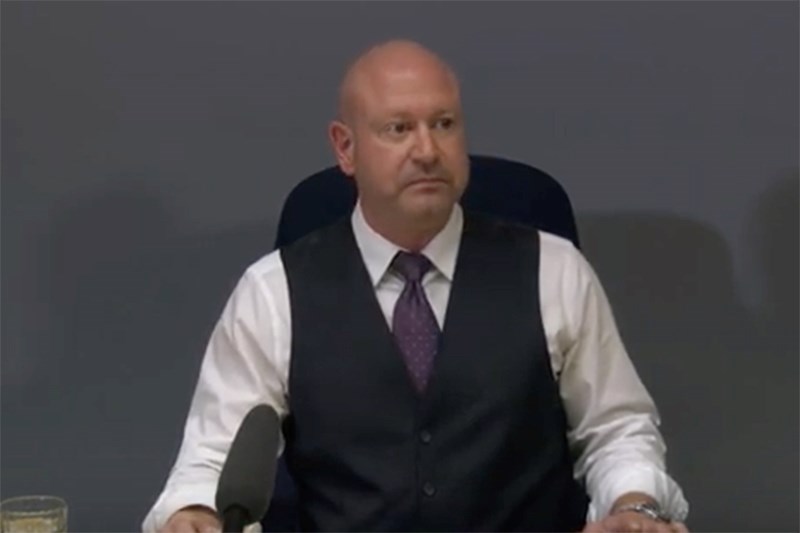Manitoba chief provincial public health officer Dr. Brent Roussin sounded a little bit like a frustrated parent or teacher who is trying to pass on knowledge to children and students who just can’t grasp it at his Oct. 26 press conference regarding the COVID-19 situation in Manitoba.
Roussin’s frustration is understandable. After more than seven months since the first positive test for COVID-19 was announced in the province in mid-March, some people are apparently still unable – or unwilling – to absorb messages that have been repeated over and over and over on pretty much a daily basis throughout the spring and summer and the first five weeks of fall: stay home when you are sick, wash your hands, avoid large public gatherings, self-isolate if you have COVID-19 symptoms and get tested.
In the week leading up to Monday’s press conference, Manitoba saw 831 new positive tests for COVID-19 and 14 deaths from the virus – 19 per cent and more than 25 per cent respectively, of the Manitoba totals since the pandemic began: 4,349 cases and 55 deaths. On Oct. 19, there were 28 people in hospital due to COVID-19. A week later there were 80, and 15 of them were in intensive care.
“These numbers are trending in the wrong direction,” said the chief provincial public health officer.
Roussin pointed out several recent examples of people not only failing to do what they have been repeatedly asked to do – like working for a week with symptoms of COVID-19 before getting tested, leaving work because they were feeling sick but then going shopping in several stores before going home, and attending a medical procedure without disclosing that they had been a close contact of a known case, which resulted in an entire surgical team being forced to self-isolate for two weeks – but acting in essentially direct contravention of these requests and, indeed common sense, by hosting a gathering at their home despite having already tested positive for COVID-19 and not yet having completed the required period of self-isolation.
‘‘This puts significant strain on our health care system,” said Roussin, who said that if things don’t begin to turn around, Manitoba could be at 5,000 cases by the end of this week.
Less than five weeks before the Oct. 26 press conference, on Sept. 30, Manitoba had had fewer than 2,000 cases of COVID-19 since the pandemic began. On Monday, there were more than 2,000 active cases.
While the absolute numbers in the Northern Regional Health Authority area are much smaller, several health districts in the region have a rate of 200 to 400 COVID-19 cases per 100,000 people, the second-highest level under the provincial government’s measuring system. When one new case was announced in the north on Sept. 30, there were 17 total cases. Under five weeks later, that number has increased more than six-fold, to 106 total cases as of Monday, 66 of them still considered active. The health district that includes the Pas and Opaskwayak Cree Nation went from having its first four cases of COVID-19 announced Oct. 20, to having the most active cases – 20 – of any health district in the north six days later.
NRHA CEO Helga Bryant and Thompson Mayor Colleen Smook didn’t just have a press conference about the north being moved to the orange/restricted level under the provincial Pandemic Response system last Thursday for fun. Public health officials can see that people need to be reminded about how serious the situation is and how quickly it can go from something that’s of almost no concern to something that people worry about on a daily basis. As Smook pointed out, the low number of cases in the north over the spring and summer was as much luck as anything, but some people seem to have absorbed the lesson that the virus was something that couldn’t affect them. Well guess what? It’s here and the only four days in which there have been more than nine new cases for the north announced in a single day have all come in the past week. More than 60 of the north’s cases were reported in the seven days leading up to Oct. 26.
The provincial government has acted quickly in response to the rising number of cases in the north, announcing that it would be moving the region up the Pandemic Response System ladder Oct. 22, when there were 69 cases in total, 45 of them active. But as the examples Roussin gave from Winnipeg show, tightened rules don’t make as much difference as they should when people fail to follow them and seem to almost wilfully disregard them. True, COVID-19 is not a big deal for more than nine out of 10 patients, who recover at home without any medical intervention. But it is a very big deal to the 55 Manitobans who have died from the disease and their families. If the number of cases in the north keeps rising the way it has been, how long might it be before one of those deaths come from closer to home?




